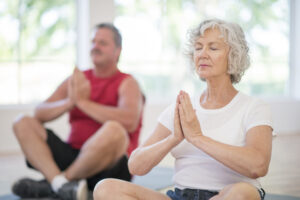Relaxation Techniques For Stress are normal responses to perceived threats or worries. If they’re becoming chronically present in your life, speak with a medical provider about ways you can cope.
Sensory experiences such as seeing a photo of your loved one, inhaling a familiar scent or chewing gum and receiving physical touch (hugs) may help quickly reduce stress levels.
1. Breathing Exercises
Anxiety triggers your body to produce stress hormones, leading to faster heart beats and quicker breathing rates. But you can effectively counter these responses through relaxation techniques such as breathing exercises.
Breathing exercises can be conducted anywhere with peace and quiet. Begin with 2-5 minutes daily and gradually extend it as your comfort with it increases. As you breathe slowly into your stomach and out slowly again, this will help relieve muscle tension.
Before engaging in deep breathing exercises, those with serious medical conditions should consult their healthcare team before beginning them. Deep breathing exercises could potentially bring on unexpected or concerning symptoms such as pain, breathlessness or dizziness that require medical advice before trying them.
Stress can be unavoidable, but there are healthy ways to cope. These techniques include reframing your thinking, decluttering your workspace and progressive relaxation. If the source of your distress is anxiety related, seek professional assistance from mental health providers and/or physicians for treatment plans and find support groups or online communities as options for relief.
Read More Immunity Boosting Tips
2. Relaxation Techniques
No matter if it’s everyday stress or chronic tension brought on by illness, long-term high levels of stress can take their toll on health. Relaxation techniques can be invaluable tools in relieving anxiety and pain as well as improving quality of life.
Relaxation techniques activate the body’s relaxation response – a state of deep rest which reduces stress response, slows heart rate and breathing rate, and can bring down blood pressure. Relaxation techniques such as meditation, rhythmic exercise (such as yoga or tai chi) or self-directed breath work may all work towards this end; others include visualizing peaceful scenes or recalling sensory memories such as feeling the breeze of soft breeze or warmth from sunrays.
Encourage your clients to find a relaxation technique that resonates with them and incorporate it into their daily routine, even if only for five or ten minutes. Practice makes perfect, so the more often your client practices relaxation skills when faced with stressful moments, the more effective they’ll become. Psychoeducation on how fight-or-flight and relaxation responses differ can also be useful and help clients better comprehend why relaxation skills should be utilized at key points during an experience.
3. Exercise
Physical activity of any kind is known to release feel-good endorphins and help dispel your worries. With regular exercise, your body could also become stronger or fitter over time which in turn could improve self-image and increase levels of confidence.
Research indicates that exercise helps mitigate the adverse effects of stress by lowering resting heart rate and blood pressure, and helping regulate digestive, immune and hormonal systems.
To experience maximum benefits from exercise, aim to do 150 minutes of moderate physical activity each week – equivalent to 30 minutes of vigorous workouts daily. Beginners should begin by starting with 10- or 15-minute sessions; joining a group class or working out alongside a friend can make sticking with your exercise regimen much simpler.
4. Meditation
Meditation can help relieve stress at any level, whether you are new or experienced. Meditation involves intentionally paying attention to the present moment in a quiet setting while paying special attention to breathing and visualization techniques, along with recognizing negative self-talk.
Studies have demonstrated how meditation helps us become less reactive and more resilient to stress, as well as providing better sleep and increasing immunity.
Start meditation off right by finding a comfortable seat in a quiet environment. For beginners, guided meditation may be helpful as a teacher will lead the practice step-by-step; this allows you to focus on the process rather than on its outcome, making the experience more manageable. Or you could try body scan meditation, wherein each part of your body from head to feet is awared as awareness comes forth; acknowledging and accepting any sensations or emotions as they surface but then releasing them just like ripples on water surface are dispersed by its environment
5. Yoga
Studies are increasingly supporting yoga’s efficacy as an effective stress reduction technique. A 2017 research paper demonstrated that even one session of Hatha yoga reduced stress and anxiety following exposure to psychologically stressful stimuli.
Studies have also demonstrated how yoga enhances psychosocial resources such as interoceptive awareness, mindfulness, spiritual wellbeing and self-compassion – factors which all influence how stress is perceived and responded to. Indeed, increased self-compassion has been associated with decreased stress reactivity (Braun et al. 2018).
Yoga regulates stress hormones and fosters physical relaxation, strengthening parts of the brain that control memory, attention, awareness, thought and language. Unfortunately, too often yoga is seen simply as an escape from daily struggles rather than an inner journey towards peace; this misperception reduces its therapeutic potential. Yoga joins other mindful exercises such as Tai Chi and Qigong in improving overall health while decreasing chronic disease risks; as well as relieving common ailments like neck pain, headaches and knee osteoarthritis.




